The purpose of this page is to assist our institutional partners and others in making good decisions about how and when to send students to Thailand or other countries during COVID.
Each institution has different constraints and considerations about sending students — we hope that this page will be helpful in thinking about some of the risks and considerations in your decision making. We use Thailand as our example, but most of this applies to other countries as well. This page covers the following questions:
- What is the big picture overall?
- What is the trend?
- Who is contracting COVID?
- Where is COVID? Is it in only some regions or widespread?
- What else do you need to know for your decision making?
Big picture: US CDC COUNTRY levels
The US Center for Disease Control (CDC) divides countries into 4 tiers, with the primary criteria (for countries with a populations over 200,000) being the incident rate of cumulative cases over the past 28 days per 100,000 population. This, combined with trajectory (have new cases increased, decreased, or remained stable over the past 28 days?) determines the level for each country. (More detail is available here.) This was updated June 2021:
- Level 4: Very High — More than 500
- Level 3: High — 100-500
- Level 2: Moderate — 50-99
- Level 1: Low — Fewer than 50
The CDC publishes and updates this list for countries on a regular basis and they are available in two places. On both pages you can click through to the details about each country.
First, an overview is available on their map and summary page. This is an excellent resource for seeing the big picture at a glance, and comparing groups of countries, since you can easily see all the countries together by level.
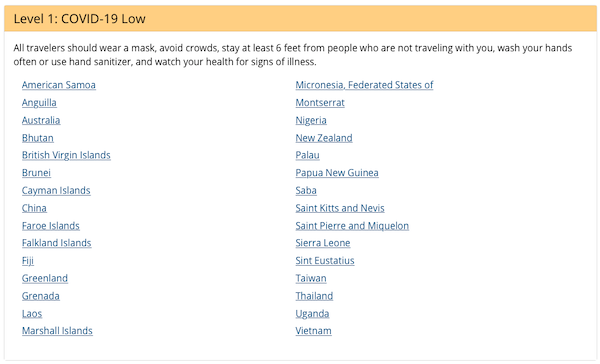
Another list, including dates of when they were updated, is available on their travel recommendations list page. This is in list format, but has the advantage of including when the country ranking was updated. This is very useful as you are trying to determine trends and how recently things have changed.
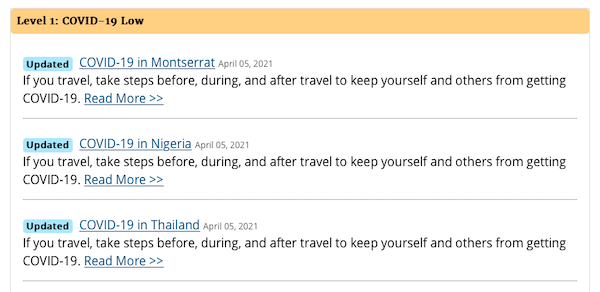
The US CDC data and recommendations are excellent, but don’t tell the whole story for a country.
Worldometer: Getting more details
Another excellent resource is Worldometer’s Coronavirus page. Summary data is at the top, and then you can find the country you are interested in below. Each country page (for example, Thailand) has details on the total, trends, etc. The most useful chart we have found is the “Daily Cases” chart, which shows a histogram of cases.
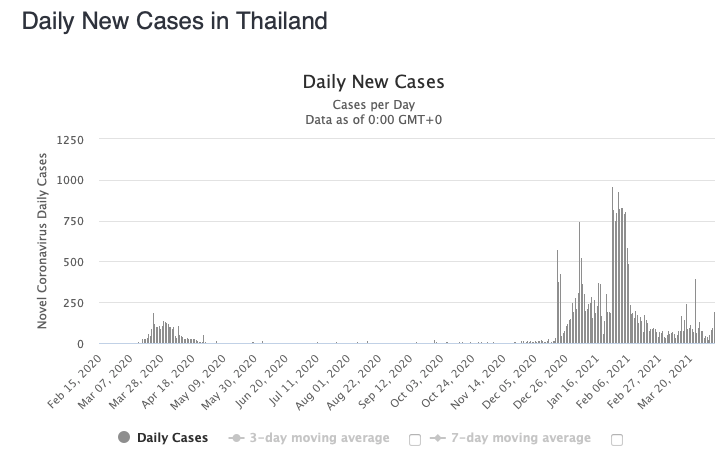
We have found this chart to be very helpful in understanding what is happening over time, and if intervention efforts are being successful. This shows directly how aggressive Thai government intervention efforts have been able to manage the second wave (which started in a crowded province with a huge percentage of migrant workers).
This is a excellent adjunct to the CDC Levels, as it provides a better and more nuanced understanding of what is happening with COVID-19 in a country.
Another excellent data visualization is the Reuters COVID-19 tracker, with a 7 day moving average per 100,000 and additional data.
Drilling deeper: Disaggregating the data
One limitation of both the CDC and Worldometer data is that it is a summary of the total cases, and doesn’t tell us much about who is testing positive for COVID. For countries like Thailand with a quarantine, we need to clearly distinguish between the total of all cases caught in quarantine and domestic cases outside of quarantine. If a country is doing a good job with an effective quarantine, they will be catching people in quarantine (“Imported Cases”) before they can enter the general population. In the illustration below, we can see that almost half the cases reported on that day were in quarantine.
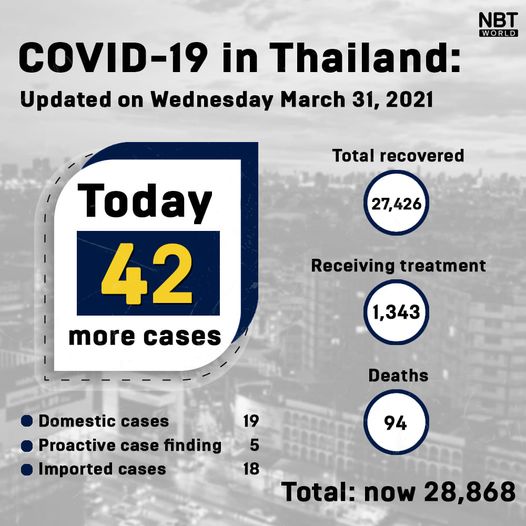
Geography matters
Finally, geography matters in understanding the dynamics of COVID in each destination country. While the CDC Levels are reported for the entire country, they do not distinguish between regions and areas within the country. This matters because with effective interventions COVID can be reasonably isolated in specific places through travel restrictions and lockdowns. During Thailand’s first wave all non-essential travel between provinces was restricted, and during the first and second wave screenings of travelers between provinces was conducted.
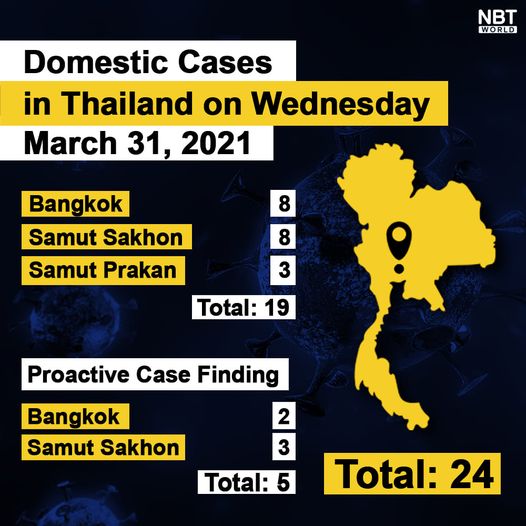
It is important in making decisions to understand where the risk is within a country, and not assume the risk is evenly spread across a country. This can help us better understand that even in a CDC Level 2 country, there may be specific places that are actually more like a Level 3 or Level 4 and carry a higher risk relative to other areas. Likewise, a Level 2 country may well have areas with only a Level 1 risk.
This is also important to understand if students are traveling during the program, as while you may have a relatively lower risk for COVID at your program site, students could travel into a higher risk area. In Thailand, as in many countries, this is dynamic, and will vary with outbreaks and hot spots of infection.
Local knowledge and expertise
Finally, a critical part of decision making is making sure you have good relationships in-country where you are going to send your students. Be sure that your partners have good connections to local health care experts in public health and epidemiology and are well informed. Learn about health care initiatives, how the population is responding to COVID mandates (e.g. are people wearing masks or not), etc. Make sure that you can trust the numbers, know how things are trending, and understand the issues specific to the country and/or the region you are sending your students to.
Some decision making Questions
Making decisions about risk during the COVID pandemic is challenging. Here are some questions and thoughts to help. We don’t have all the answers or even all of the questions, but hope that this will help guide you as you make decisions.
- What is the current situation with COVID in your destination country and city? Is it getting better or worse? Does it vary throughout the country?
- Who are your stakeholders? Be sure to identify all of them, and think through what their concerns are — students, faculty, in-country partners, host communities, administrators, etc. Try and be fair to all the stakeholders and be careful that one stakeholder is not dominant, while still being responsible to manage the risk appropriately.
- Who is ultimately in charge of the decision to send students? Is it a multi-disciplinary risk management committee with public health and epidemiology experts on it? Is it just the study abroad office? Is it dictated to you by your institution’s attorneys or insurance provider? Try and find a way to make sure that you have a good mix of interests and expertise in the decision making process.
- What are your non-negotiables? That is, what are the key things you need to know to make a decision, and how much flexibility do you have? For example, you are told you can only send students to a Level 1 country, what about a country that is controlling COVID, but is bouncing between a Level 1 and Level 2?
- How much do you know about the county, regional, and city level in your destination? Do you have all the information you need? If not, where can you find it?
- What local knowledge do you have? Does this support the CDC Country Level as accurate or does it mean the CDC Level may not be the best way to assess your country or region?
- What has the previous response to COVID been? This will tell you a lot about future prospects.
- What about vaccinations? Safe and effective vaccines are a game changer, both for students and for destination countries. The US is rolling them out very fast. Does having vaccinated students change you decision? How?
As always, we hope this is helpful! Please feel free to get in touch if you have any questions or good suggestions for updates. Email us at [email protected].